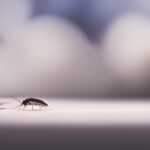Beginners Guides
How To Wire A Tiny House For Solar Power
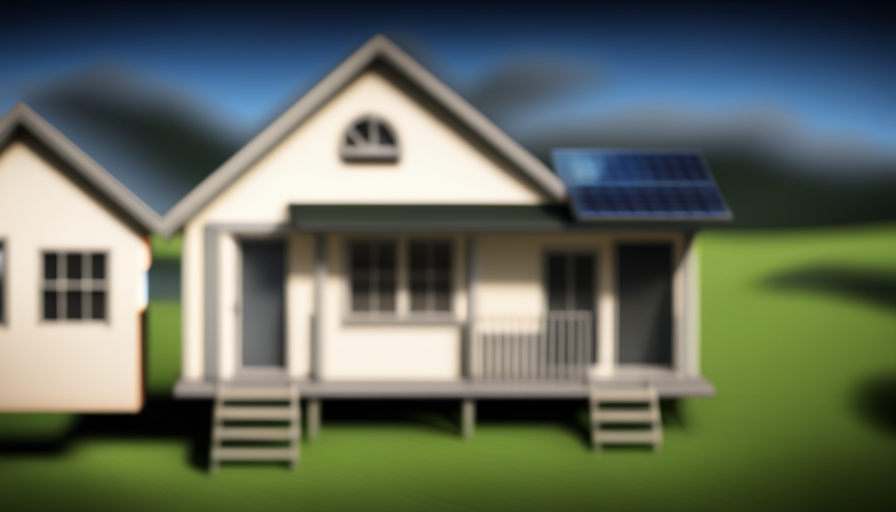
By chance, as I began my quest to establish a self-reliant and eco-friendly way of life, I discovered the fascinating realm of tiny houses. These small homes present a distinctive chance to reduce our environmental impact and sustain a life disconnected from the conventional power grid.
However, powering a tiny house can be quite a challenge. That’s where solar power comes in. In this article, I will guide you through the intricate process of wiring a tiny house for solar power, enabling you to harness the unlimited energy of the sun.
We will start by assessing your power needs and calculating the size of your solar power system. Then, I will help you choose the ideal solar panels and determine the battery storage capacity required.
Next, we will delve into the installation of a solar charge controller and an inverter for AC power. I will also provide detailed instructions on wiring your tiny house for DC power.
Finally, we will discuss testing, monitoring, and maintaining your solar power system, as well as upgrading it to meet your evolving needs.
So, let’s embark on this electrifying journey towards a greener future!
Key Takeaways
- Assess power needs and calculate the size of the solar power system.
- Choose the right solar panels and battery storage capacity.
- Install a solar charge controller and inverter for AC power.
- Provide detailed instructions on wiring a tiny house for DC power.
Assess Your Power Needs
Now it’s time to figure out how much power you’ll need to keep your tiny house running smoothly on solar energy. Calculating energy consumption is crucial to ensure that your solar power system meets your needs.
Start by making a list of all the electrical appliances and devices you plan to use in your tiny house. Consider their power ratings and the average number of hours you’ll use them each day. This will help you determine the total energy consumption of your house.
Once you have this information, you can start optimizing power usage by choosing energy-efficient appliances and implementing energy-saving practices. By understanding your power needs and optimizing power usage, you can effectively design and install a solar power system that’ll meet your requirements.
Now let’s move on to calculating your solar power system size and ensuring it can meet your energy demands.
Calculate Your Solar Power System Size
To accurately determine the size of your solar system, you’ll need to calculate the amount of electricity needed to sustain your energy needs in your cozy abode. This step is crucial in ensuring that your solar power system is capable of meeting your requirements.
Here are three key factors to consider when calculating your solar power system size:
-
Solar power benefits: Understand the advantages of solar power, such as reduced electricity bills, lower carbon footprint, and potential financial incentives.
-
Solar power installation process: Familiarize yourself with the steps involved in installing a solar power system, including site assessment, panel placement, and connection to the electrical grid.
-
Evaluate your energy consumption: Determine your daily energy usage by analyzing your appliances, lights, and other electrical devices. Consider seasonal variations and the number of sunlight hours in your area.
By accurately calculating your energy needs and understanding the solar power benefits and installation process, you can now move on to choosing the right solar panels for your tiny house.
Choose the Right Solar Panels
When it comes to outfitting your cozy abode with the perfect solar solution, finding the right panels for your energy needs is key. The efficiency of solar panels is crucial in determining how much energy they can generate. Look for panels with high efficiency ratings to maximize power output.
Additionally, consider the placement of your solar panels. Ideally, they should be installed in a location that receives ample sunlight throughout the day, such as a south-facing roof. Avoid shading from trees, buildings, or other obstructions that can reduce the panels’ effectiveness. Proper placement ensures optimal sunlight exposure and increases overall energy production.
Moving forward to determining your battery storage capacity, it’s important to consider how much energy you want to store for later use.
Determine Your Battery Storage Capacity
Prepare to calculate the capacity of your battery to ensure you can store sufficient energy for later use. To optimize energy storage in your tiny house, follow these steps:
-
Determine your daily energy consumption by adding up the wattage of all your appliances and devices.
-
Calculate the number of days you want to rely on battery power during periods of low sunlight.
-
Multiply your daily energy consumption by the number of days to get your total energy requirement.
-
Divide the total energy requirement by the depth of discharge (DOD) of your battery to calculate the necessary battery capacity.
By accurately calculating your battery capacity, you can ensure that your tiny house has enough energy storage to meet your needs.
Now, let’s move on to the next step and learn how to install a solar charge controller.
Install a Solar Charge Controller
Once you’ve determined your battery storage capacity, it’s time to install the solar charge controller to ensure efficient energy management in your cozy abode. The solar charge controller plays a crucial role in regulating the flow of electricity from your solar panels to the batteries, preventing overcharging and ensuring optimal performance.
To begin, mount the controller in a well-ventilated area near your batteries, ensuring proper wiring connections. It’s essential to follow the manufacturer’s instructions for installation and to adhere to safety precautions.
Regular solar charge controller maintenance is necessary to keep it functioning optimally. This includes checking for loose connections, cleaning the controller regularly, and inspecting for any signs of damage.
Troubleshooting the solar charge controller involves identifying any error codes or abnormal behavior and addressing the issue accordingly.
With the solar charge controller installed and maintained, you’re now ready to connect your solar panels to the charge controller, maximizing the efficiency of your solar power system.
Connect Your Solar Panels to the Charge Controller
To ensure optimal performance, it’s crucial to connect your solar panels to the charge controller, effectively maximizing the efficiency of your renewable energy system. When connecting solar panels to the charge controller, it’s important to follow the manufacturer’s instructions and safety guidelines. To help you understand the process, here’s a table that outlines the basic steps:
| Solar Panel Connection | Charge Controller Connection | Troubleshooting |
|---|---|---|
| Connect positive wire from panel to positive terminal on controller | Connect negative wire from panel to negative terminal on controller | Check for loose connections |
| Connect positive wire from controller to battery’s positive terminal | Connect negative wire from controller to battery’s negative terminal | Test voltage output |
| Install appropriate fuses or breakers in between panels and controller | Ensure proper grounding of the system | Monitor system performance regularly |
By following these steps and troubleshooting any issues, you can ensure a successful connection of your solar panels to the charge controller. In the next section, we will discuss how to install an inverter for AC power.
Install an Inverter for AC Power
Now that you’ve successfully connected your solar panels to the charge controller, it’s time to bring your renewable energy system to life by installing the inverter. The inverter acts as the heart of your system, converting DC power from the batteries into AC power to energize your home like a beating heart powers the body.
When choosing the best inverter for your tiny house, consider the power requirements of your appliances and electronics. Look for an inverter that can handle the maximum power load you anticipate. It’s also important to consider the inverter’s efficiency, reliability, and warranty.
Once you have chosen the right inverter, carefully follow the manufacturer’s instructions to install it correctly. In case of any issues, such as the inverter not functioning properly or generating excessive heat, refer to the troubleshooting guide provided by the manufacturer.
With the inverter installed and functioning correctly, you are now ready to wire your tiny house for DC power, ensuring a seamless transition in your solar power system.
Wire Your Tiny House for DC Power
With the inverter humming and electricity flowing through your tiny sanctuary, your home glows with the gentle hum of renewable energy. One of the key benefits of using solar power in your tiny house is the ability to wire it for DC power. DC electrical wiring allows for a more efficient transfer of energy from the solar panels to your appliances and batteries. To properly wire your tiny house for DC power, you need to understand the basics of electrical circuits and safety precautions.
To help you visualize the process, refer to the table below:
| Component | Function |
|---|---|
| Solar Panels | Capture sunlight |
| Charge Controller | Regulates power flow |
| Batteries | Store excess energy |
| DC Load | Power appliances |
| Fuses | Protect against overloads |
By understanding the components and their functions, you can ensure a smooth and efficient wiring process for your tiny house. Now, let’s move on to the next section about testing and monitoring your solar power system.
Test and Monitor Your Solar Power System
Make sure you regularly test and monitor your solar power system to ensure it’s running smoothly and efficiently. Testing and monitoring the solar panel efficiency is crucial in order to identify any issues or problems that may arise.
One common issue to troubleshoot is a decrease in solar panel efficiency, which could be caused by shading, dirt, or damage to the panels. To test the efficiency, you can use a multimeter to measure the voltage and current output of the panels.
Additionally, monitoring the system’s performance over time can help identify any changes or potential problems. Keep an eye out for any noticeable drops in energy production or irregularities in the power flow.
By regularly testing and monitoring your solar power system, you can ensure it’s operating at its best and address any issues promptly.
Moving on to maintaining and upgrading your solar power system…
Maintain and Upgrade Your Solar Power System
Ensuring the optimal performance of your solar energy setup is like tending to a flourishing garden – regular maintenance and occasional upgrades will help your system thrive and continue to generate clean, renewable energy.
Here are three key steps to maintain and upgrade your solar power system:
-
Clean and inspect your solar panels regularly to maximize their efficiency. Remove dirt, debris, and snow, and check for any damage or loose connections that may affect performance.
-
Monitor your system’s performance using a solar power monitoring tool. This will help you identify any issues, such as low output or faulty components, and take prompt action to resolve them.
-
Stay informed about common solar power system issues and troubleshooting techniques. Familiarize yourself with common problems like inverter failures or shading issues, and learn how to address them effectively to ensure optimal performance.
By following these maintenance and troubleshooting practices, you can keep your solar power system operating at its best and enjoy the benefits of clean, renewable energy for years to come.
Frequently Asked Questions
What are the potential risks or dangers associated with wiring a tiny house for solar power?
Potential risks and dangers associated with wiring a tiny house for solar power include safety precautions, fire hazards, and electrical hazards. It’s important to take proper safety measures when working with solar power systems to prevent accidents and damage.
Safety precautions such as using the correct wiring methods, installing circuit breakers, and grounding the system can help minimize the risks. Fire hazards may arise from faulty wiring or improper installation, while electrical hazards can occur if the system isn’t properly grounded or if there’s a malfunction.
Can I connect multiple tiny houses to one solar power system?
Sure, you can connect multiple tiny houses to one solar power system. It offers numerous benefits like cost savings, environmental friendliness, and energy independence.
By interconnecting the houses, you can share the generated solar energy, reducing the need for individual systems. This allows for more efficient energy usage and lowers the overall installation and maintenance costs.
It’s a smart and sustainable solution for powering multiple tiny houses with clean, renewable energy.
How long does the installation process typically take for wiring a tiny house for solar power?
The installation time for wiring a tiny house for solar power can vary depending on several factors. However, on average, the process typically takes around 2-3 days to complete.
It’s important to note that this timeframe can be affected by common pitfalls such as improper planning, lack of experience, or unexpected complications. To ensure a smooth installation, it’s recommended to thoroughly research and consult with professionals before beginning the project.
Are there any specific building codes or regulations that need to be followed when wiring a tiny house for solar power?
When wiring a tiny house for solar power, it’s crucial to adhere to specific building codes, regulations, and electrical standards. These measures ensure compliance and safety during the installation process. Building codes may dictate the type of wiring, grounding requirements, and placement of electrical components.
Electrical standards provide guidelines for properly sizing and installing solar panels, inverters, and batteries. By following these regulations, you can ensure a safe and efficient solar power system for your tiny house.
How much maintenance is required for a solar power system in a tiny house, and what are the associated costs?
When it comes to the maintenance of a solar power system in a tiny house, regular upkeep is necessary to ensure optimal performance. This includes cleaning the solar panels to remove any dirt or debris that may hinder their efficiency.
Additionally, the battery bank should be regularly checked for proper functioning and replaced if needed.
As for costs, regular maintenance expenses may include cleaning supplies, battery replacements, and occasional professional inspections, which can vary depending on the specific system and its components.
Conclusion
In conclusion, wiring a tiny house for solar power is a meticulous process that requires careful planning and consideration of various factors. By assessing your power needs and calculating the system size, you can determine the right solar panels and battery storage capacity.
Installing a solar charge controller and inverter for AC power is essential, followed by wiring your tiny house for DC power. Testing and monitoring the system is crucial, and regular maintenance and upgrades will ensure optimal performance.
Embracing this sustainable power solution opens the door to a greener and more self-sufficient lifestyle.
Hi, I’m Emma. I’m the Editor in Chief of Tiny House 43, a blog all about tiny houses. While tree houses are often associated with childhood, they can be the perfect adult retreat. They offer a cozy space to relax and unwind, surrounded by nature. And since they’re typically built on stilts or raised platforms, they offer stunning views that traditional homes simply can’t match. If you’re looking for a unique and romantic getaway, a tree house tiny house might just be the perfect option.
Beginners Guides
How Do I Get Rid of Tiny Flies in My House
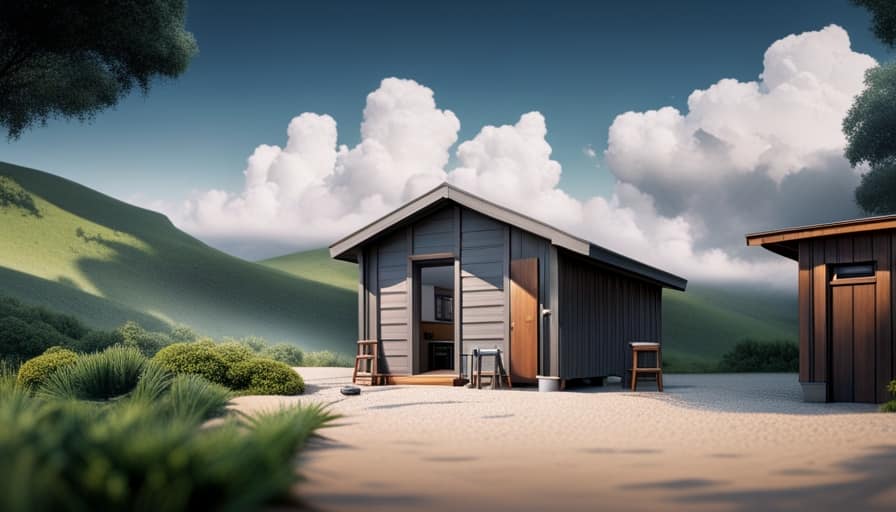
Recently, I have been bothered by these annoying little flies in my home, and I must say, they are really starting to get on my nerves!
But fear not, because I’ve done my research and I’m here to share some expert tips on how to get rid of those tiny flies once and for all.
From identifying the different types of flies to using natural remedies and chemical solutions, I’ve got you covered.
So let’s dive in and bid farewell to these unwanted guests together!
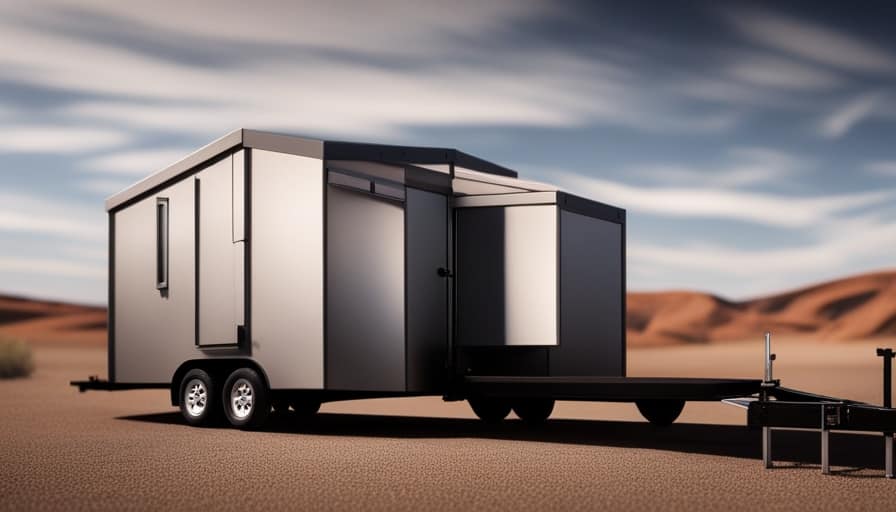
Key Takeaways
- Identifying the common types of tiny flies in your house is important for effective pest control.
- Tiny flies are attracted to moist and decaying organic matter, such as overripe fruits and rotting vegetables.
- Natural remedies, such as vinegar and dish soap solutions, can be used to eliminate tiny flies from your house.
- Preventing future infestations of tiny flies involves maintaining a clean environment, sealing cracks or openings, and storing perishable items properly.
Identifying the Common Types of Tiny Flies in Your House
I can easily identify the common types of tiny flies in my house by observing their physical characteristics and behavior. Flies are attracted to our homes for various reasons, including the presence of food, moisture, and waste. It’s important to note that these flies can pose health risks, as they can carry and spread disease-causing organisms.
To identify the types of flies, I first look at their size and color. For instance, fruit flies are small and have a tan or brown color. Drain flies, on the other hand, are gray or black and have a fuzzy appearance.
Understanding the Reasons Why Tiny Flies Infest Your Home
To understand why tiny flies infest your home, it’s important to consider their attraction to certain conditions and factors within your living space.
These flies, commonly known as fruit flies or drain flies, are attracted to moist and decaying organic matter. They seek out common breeding grounds such as overripe fruits, rotting vegetables, and damp areas in your kitchen or bathroom.

These tiny flies are also drawn to standing water in sinks, drains, and garbage disposals. Signs of a fly infestation include the presence of numerous flies hovering around these areas, as well as the sighting of their larvae or pupae.
It’s crucial to address these conditions and remove any potential breeding grounds to effectively eliminate the infestation and prevent future occurrences.
Natural Remedies to Eliminate Tiny Flies From Your House
One effective way to eliminate tiny flies from your house is by using a combination of vinegar and dish soap. This homemade vinegar fly spray is a non-toxic and practical solution to get rid of those pesky insects.
Here’s how you can make it:
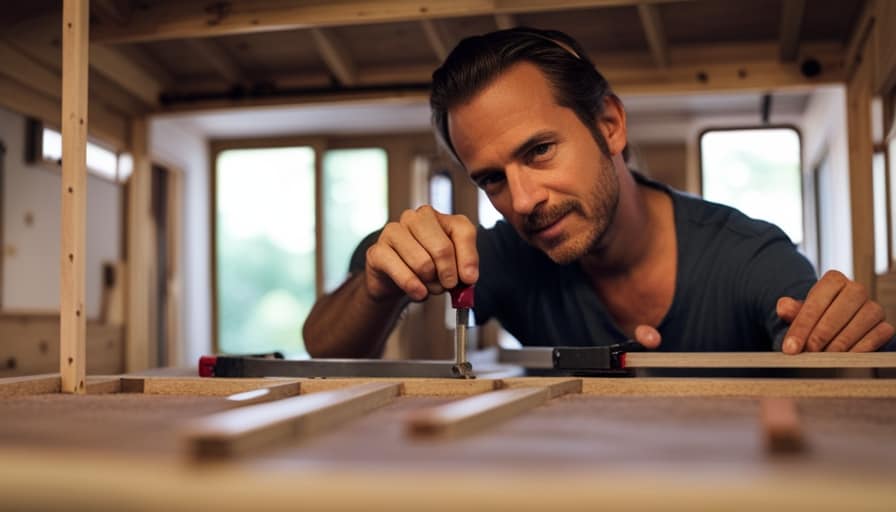
- Mix equal parts of vinegar and water in a spray bottle.
- Add a few drops of dish soap to the mixture. The soap helps to break the surface tension of the liquid, making it easier for the flies to drown.
- Shake the bottle gently to ensure the ingredients are well combined.
- Spray the solution directly onto the flies or in areas where they’re commonly found, such as near windows or fruit bowls.
This natural fly spray isn’t only effective but also safe for your family and pets. It traps and kills the flies without the use of harmful chemicals.
Give it a try and say goodbye to those tiny flies in your house!
Using Chemical Solutions to Get Rid of Tiny Flies in Your Home
Bleach is a strong and effective chemical solution that can help eliminate tiny flies in your home. Chemical solutions, such as bleach, can be highly effective in eliminating tiny flies. The strong properties of bleach make it a powerful tool for killing flies and destroying their breeding grounds. However, it’s important to use caution when using chemical solutions, as they can be harmful to humans and pets if not used properly.
When comparing chemical solutions to natural remedies for getting rid of tiny flies in your house, it’s important to consider their effectiveness.
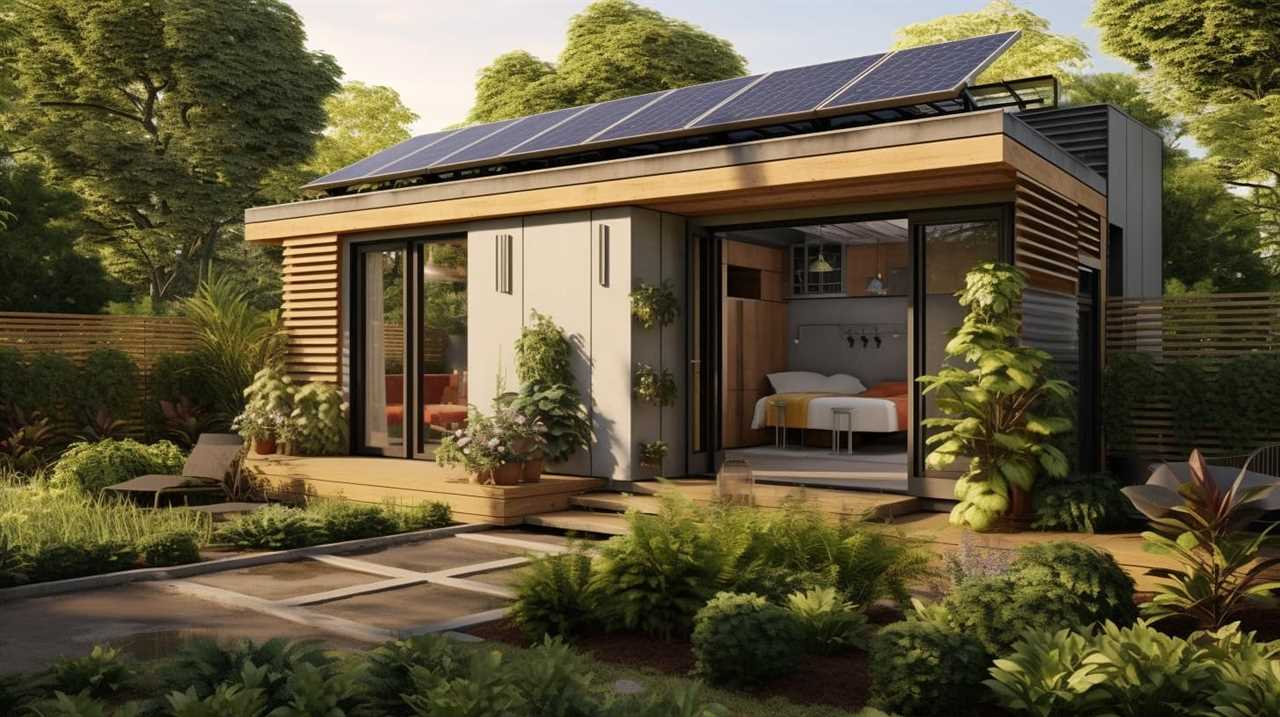
In the next section, we’ll discuss methods for preventing future infestations of tiny flies in your house.
Preventing Future Infestations of Tiny Flies in Your House
I can take steps to prevent future infestations of tiny flies in my house by implementing proper sanitation practices. By maintaining a clean environment, I can greatly reduce the chances of reinfestation. Here are three key practices to incorporate:
-
Regularly clean and sanitize all areas of the house, especially the kitchen and garbage disposal areas. Empty and clean trash cans frequently to prevent any organic matter from attracting flies.
-
Seal any cracks or openings in doors, windows, and screens to prevent flies from entering the house. Repair any damaged screens to ensure they’re intact and functioning properly.
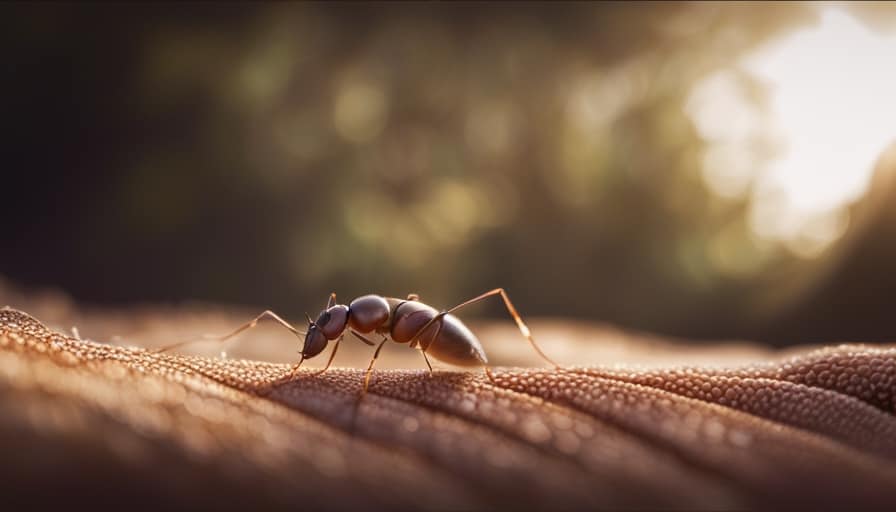
-
Store fruits, vegetables, and other perishable items in sealed containers or in the refrigerator. Flies are attracted to the odors of decaying food, so keeping it properly stored will deter them.
Frequently Asked Questions
How Do Tiny Flies Affect My Health?
Tiny flies can pose health risks, as they can carry bacteria and pathogens that can cause illnesses. To avoid health issues, it’s important to keep your house clean, dispose of trash properly, and eliminate any standing water where they can breed.
Can Tiny Flies Damage My Property?
Tiny flies can indeed cause damage to your property. Their larvae can infest and feed on organic materials, such as wood, causing structural damage over time. It’s important to address the issue promptly to prevent further harm.
Are Tiny Flies Attracted to Specific Food Sources?
Tiny flies are often attracted to specific food sources, such as overripe fruits or decaying organic matter. Understanding their breeding habits and implementing effective prevention methods, like proper sanitation and sealing entry points, can help keep them out of the house.
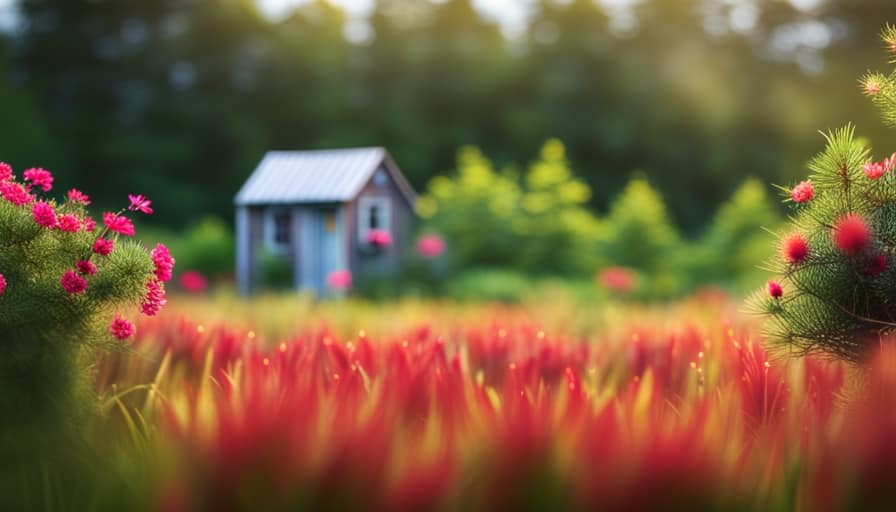
How Long Does It Take for Natural Remedies to Eliminate Tiny Flies?
In my experience, the speed of effectiveness of natural remedies versus chemical solutions for eliminating tiny flies can vary. While some natural remedies may work quickly, others may take longer to fully eliminate the flies. It’s important to be patient and consistent in your efforts.
Are There Any Long-Term Effects of Using Chemical Solutions to Get Rid of Tiny Flies?
Using chemical solutions to eliminate tiny flies in your house can have long-term environmental impacts. Consider using alternative methods like natural remedies or traps that are safer and more sustainable for the ecosystem.
Conclusion
In conclusion, it’s evident that tiny flies can be a nuisance in our homes. By understanding their types and reasons for infestation, we can effectively eliminate them using natural remedies or chemical solutions.
However, it’s crucial to prevent future infestations by maintaining cleanliness and proper waste management. Rest assured, with the right knowledge and approach, you can bid farewell to these pesky insects and enjoy a fly-free home environment.
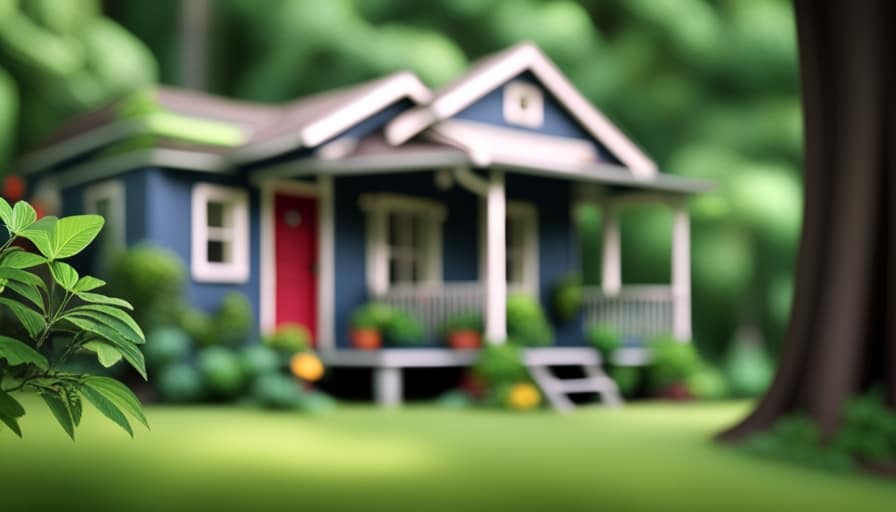
I’m Theodore, and I love tiny houses. In fact, I’m the author of Tiny House 43, a book about tiny houses that are also tree houses. I think they’re magical places where imaginations can run wild and adventures are just waiting to happen.
While tree houses are often associated with childhood, they can be the perfect adult retreat. They offer a cozy space to relax and unwind, surrounded by nature. And since they’re typically built on stilts or raised platforms, they offer stunning views that traditional homes simply can’t match.
If you’re looking for a unique and romantic getaway, a tree house tiny house might just be the perfect option.
Beginners Guides
How Do I Get Rid of Tiny Ants in My House

- Health risks: Are there any potential diseases that can be transmitted by ants in the house?
- Prevention methods: What are some effective ways to keep ants out of the house to avoid any health risks?
I have been dealing with these stubborn small ants in my home, and I’m sure you can empathize. It seems like I am stuck in an endless game of hide-and-seek with these little creatures.
But fear not, because I’ve done my research and I’m here to share some tried and true methods to get rid of them for good. From natural remedies to chemical solutions, I’ve got you covered.
So let’s roll up our sleeves and say goodbye to those pesky ants together!
Key Takeaways
- Identifying the type of ants in your house is important in order to effectively address the infestation issue.
- Understanding the behavior and nesting habits of tiny ants is essential in finding and eliminating their colonies.
- Natural remedies such as vinegar and water solution, essential oils, and cinnamon can help repel and eliminate tiny ants.
- If natural remedies don’t work, consider using chemical solutions or seeking professional pest control services for a safer and more comprehensive approach.
Identifying the Type of Ants in Your House
I personally find it helpful to identify the type of ants in my house by observing their behavior and physical features. Distinguishing characteristics play a crucial role in determining the species of ants present.

Some common types of household ants include pavement ants, odorous house ants, and pharaoh ants. Pavement ants are dark brown or black with parallel grooves on their heads and thoraxes. Odorous house ants emit a distinct odor when crushed, often described as a rotten coconut smell. Pharaoh ants are light yellow to reddish-brown and have two distinct nodes on their petioles.
In terms of common habitats, ants can be found in various areas of the house, including kitchens, bathrooms, and around food sources. Understanding the behavior and nesting habits of tiny ants is essential in effectively addressing the infestation issue.
Understanding the Behavior and Nesting Habits of Tiny Ants
There are several key factors to consider when understanding the behavior and nesting habits of tiny ants in your house.
These tiny creatures are social insects, living in colonies that can range from a few dozen to thousands of individuals. They communicate and cooperate through chemical signals and pheromones, which helps them locate food sources and establish trails.

When it comes to nesting, tiny ants can build their colonies in various locations, such as in wall voids, under floors, or even in potted plants. Understanding their nesting habits is crucial in effectively eliminating them from your house.
It’s important to note that while ants can be a nuisance indoors, they play a vital role in the ecosystem, helping to decompose organic matter and control other insect populations. However, their presence in food storage areas can contaminate and spoil food, making it necessary to address their infestation promptly and safely.
Natural Remedies to Get Rid of Tiny Ants in Your House
One effective natural remedy to eliminate tiny ants in your house is using a vinegar and water solution. Vinegar, with its strong odor, disrupts their scent trails and confuses them, making it difficult for them to navigate. To create the solution, mix equal parts of white vinegar and water in a spray bottle. Then, simply spray the solution directly onto the ants or their entry points.
Another natural remedy is using essential oils, such as peppermint, lemon, or tea tree oil. These oils have strong scents that repel ants. Mix a few drops of your chosen essential oil with water and spray it in areas where ants are present.
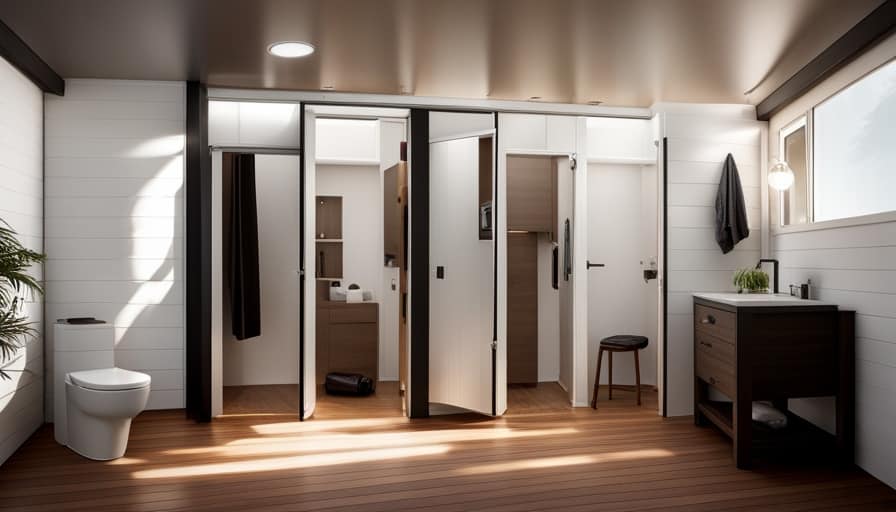
These natural remedies provide an eco-friendly and safe way to get rid of tiny ants in your house. However, if these methods don’t work, it may be necessary to consider chemical solutions for eliminating tiny ants.
Chemical Solutions for Eliminating Tiny Ants
If you’re dealing with a persistent infestation of tiny ants in your house, using insecticide sprays can be an effective solution to eliminate them. However, it is important to consider non-toxic alternatives and professional pest control services for a safer and more comprehensive approach.
| Chemical Solution | How it Works | Pros | Cons |
|---|---|---|---|
| Insecticide sprays | Kills ants on contact | – Easy to use – Widely available – Immediate results |
– Chemical exposure – Harmful to pets and children – Potential environmental impact |
While insecticide sprays can quickly kill ants, they may pose risks to your health and the environment. If you prefer non-toxic alternatives, consider using natural repellents like vinegar, lemon juice, or essential oils. These substances are less harmful and can help deter ants from entering your home.
Another option is to hire professional pest control services. They have the expertise and specialized equipment to effectively eliminate ant infestations. Professionals can also assess the extent of the problem and provide long-term solutions to prevent future infestations.
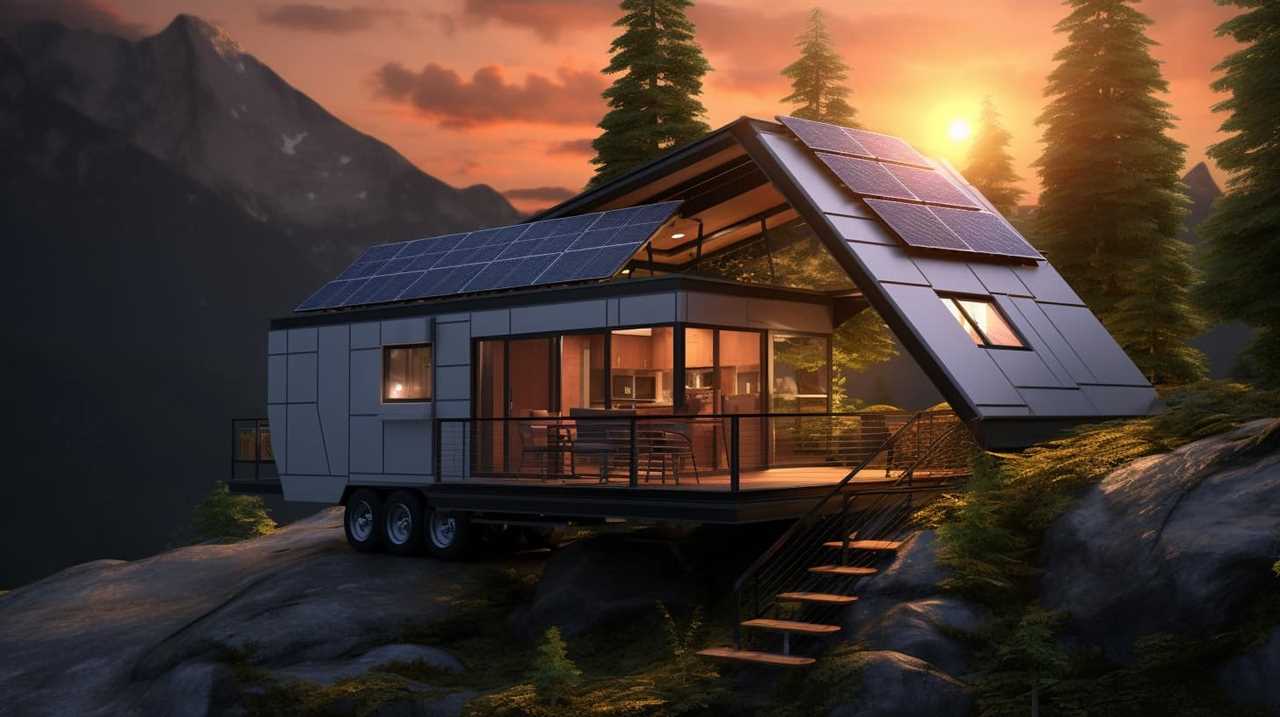
Preventing Future Infestations: Tips and Tricks
When I encountered a persistent infestation of tiny ants in my house, I took proactive steps to prevent future infestations. Here are some effective ant proofing techniques for your home and long-term strategies for keeping ants out:
-
Seal cracks and crevices: Inspect your house for any openings where ants can enter, such as gaps around doors, windows, and pipes. Use caulk or weatherstripping to seal these entry points.
-
Keep your house clean: Clean up food and drink spills promptly, and store food in airtight containers. Wipe down countertops and sweep floors regularly to remove any crumbs or residue that may attract ants.
-
Remove potential ant habitats: Trim back vegetation that’s in contact with your house, as ants can use it as a bridge to enter. Also, keep firewood and other outdoor items away from the foundation.
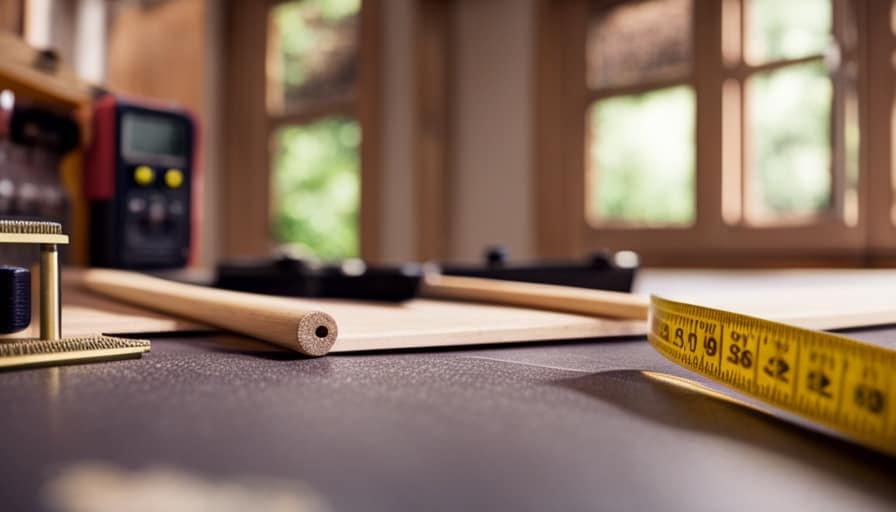
-
Use natural deterrents: Certain scents like peppermint, cinnamon, and vinegar can repel ants. Spray these substances around entry points or wipe down surfaces to discourage ants from entering.
Frequently Asked Questions
How Do I Get Rid of Ants in My Garden?
To get rid of ants in my garden, I use organic pest control methods and natural ant repellents. These methods are effective in keeping ants away and maintaining a healthy garden environment.
Can I Use Vinegar to Kill Ants?
Yes, vinegar can be used to kill ants. However, there are also other natural ant repellents that you can consider using as alternatives to vinegar.
What Should I Do if I Have a Severe Ant Infestation?
If I have a severe ant infestation, I would first focus on prevention tips such as sealing entry points and removing food sources. If the problem persists, I would consider professional ant extermination options for effective and long-lasting results.

Are There Any Health Risks Associated With Ants in the House?
There are potential health risks associated with ants in the house. They can contaminate food, spread bacteria, and even cause allergies. It’s important to take preventive measures to avoid these risks.
Can I Use Essential Oils to Repel Ants?
I find that using essential oils for ant control can be effective. However, it’s important to consider the pros and cons of natural ant repellents. While they are safe and eco-friendly, they may not be as potent as chemical options.
Conclusion
In conclusion, by identifying the type of ants in your house, understanding their behaviors and nesting habits, and implementing natural or chemical remedies, you can effectively get rid of tiny ants.
However, prevention is key to avoiding future infestations. Just as a fortress protects its kingdom from invaders, taking proactive measures will safeguard your home from these pesky pests.
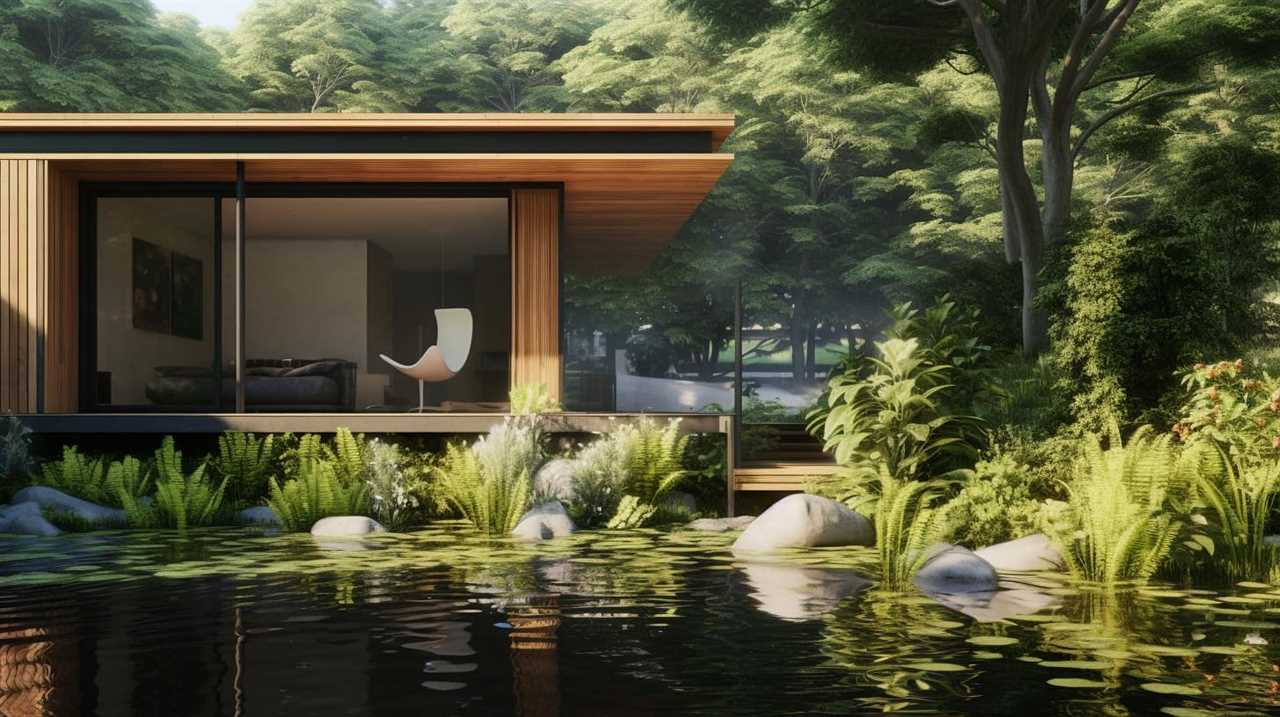
Stay vigilant and maintain cleanliness to ensure a ant-free environment.
I’m Theodore, and I love tiny houses. In fact, I’m the author of Tiny House 43, a book about tiny houses that are also tree houses. I think they’re magical places where imaginations can run wild and adventures are just waiting to happen.
While tree houses are often associated with childhood, they can be the perfect adult retreat. They offer a cozy space to relax and unwind, surrounded by nature. And since they’re typically built on stilts or raised platforms, they offer stunning views that traditional homes simply can’t match.
If you’re looking for a unique and romantic getaway, a tree house tiny house might just be the perfect option.
Beginners Guides
How Cheap Can You Build a Tiny House

Constructing a small house is akin to figuring out a puzzle – it can be difficult, but the payoff is valuable. As someone who enjoys discovering inventive answers, I sympathize with the longing to create a gorgeous home without breaking the bank.
In this article, we’ll explore the factors that affect the cost of building a tiny house and discover budget-friendly materials and labor-saving strategies. Join me on this journey to uncover just how cheap you can build your dream tiny house.
Key Takeaways
- Choosing the right location in a rural area with lower land prices and fewer building restrictions can significantly affect the cost of building a tiny house.
- Using alternative building methods such as reclaimed materials or repurposed items can help reduce costs.
- Implementing cost-saving techniques and building on a budget are important factors in building a cheap tiny house.
- Utilizing budget-friendly building materials, such as affordable insulation options and low-cost flooring alternatives, can also contribute to building a cheap tiny house.
Factors Affecting the Cost of Building a Tiny House
What are the factors that affect the cost of building a tiny house?
When it comes to building a tiny house on a budget, there are several cost-saving techniques and alternative building methods that can significantly impact the overall cost.

One of the main cost-saving techniques is choosing the right location. Building in a rural area with lower land prices and fewer building restrictions can help keep costs down.
Another factor that affects the cost is the size and design of the tiny house. The simpler the design, the more cost-effective it will be.
Additionally, using alternative building methods such as reclaimed materials or repurposed items can also help reduce costs.
By considering these factors and implementing cost-saving techniques, it’s possible to build a tiny house on a budget.
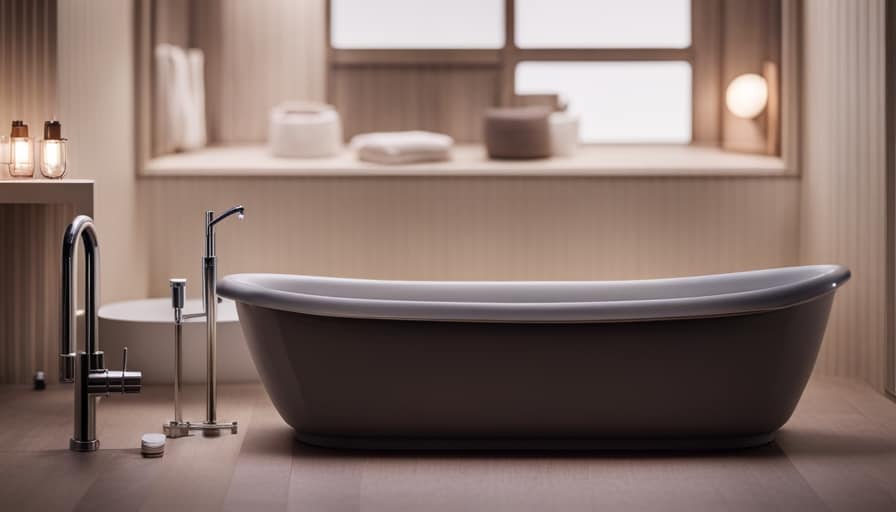
Transitioning into the subsequent section about budget-friendly tiny house building materials, let’s explore how the choice of materials can further impact the overall cost.
Budget-Friendly Tiny House Building Materials
When it comes to building a tiny house on a budget, I can find affordable building materials that will help keep costs down. One area where I can save money is by choosing affordable insulation options. Instead of expensive spray foam insulation, I can opt for alternatives such as fiberglass batts or rigid foam boards. These options are cost-effective and still provide good insulation for the tiny house. Additionally, I can consider low-cost flooring alternatives to save money. Instead of hardwood or tile, I can use vinyl plank flooring or laminate flooring, which are both affordable and durable. By making smart choices when it comes to insulation and flooring, I can build a budget-friendly tiny house without compromising on quality.
| Affordable Insulation Options | Low Cost Flooring Alternatives |
|---|---|
| Fiberglass batts | Vinyl plank flooring |
| Rigid foam boards | Laminate flooring |
Strategies for Saving Money on Tiny House Design
To save money on my tiny house design, I can employ cost-saving strategies such as utilizing multipurpose furniture and maximizing storage space. By incorporating cost-effective design options and implementing DIY tiny house building techniques, I can create a functional and affordable living space.
One key strategy is to choose furniture that serves multiple purposes, such as a sofa that can be converted into a bed or a dining table that can be folded away when not in use. This not only saves money on buying separate pieces of furniture but also maximizes the use of limited space.
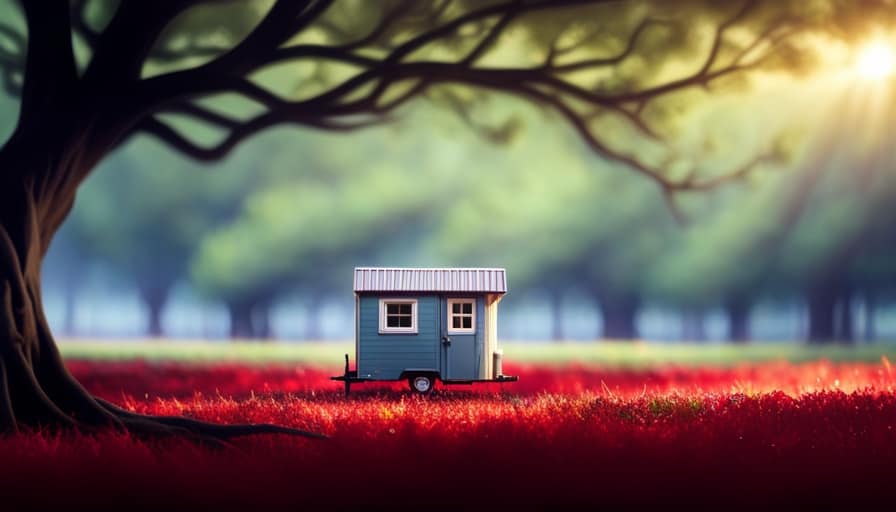
Another cost-saving strategy is to maximize storage space by utilizing built-in shelving, under-bed storage, and wall-mounted organizers. This eliminates the need for additional storage furniture and keeps the space clutter-free.
Creative Ways to Reduce Labor Costs in Tiny House Construction
I can significantly reduce labor costs in tiny house construction by hiring a small team of skilled workers instead of a large crew. This approach allows for effective coordination and streamlined communication, resulting in increased efficiency and reduced labor hours.
Here are some creative ways to further reduce labor costs in tiny house construction:
-
Utilize DIY construction techniques: Encourage the use of DIY construction techniques, where homeowners can actively participate in the building process. This not only reduces labor costs but also creates a sense of ownership and satisfaction.
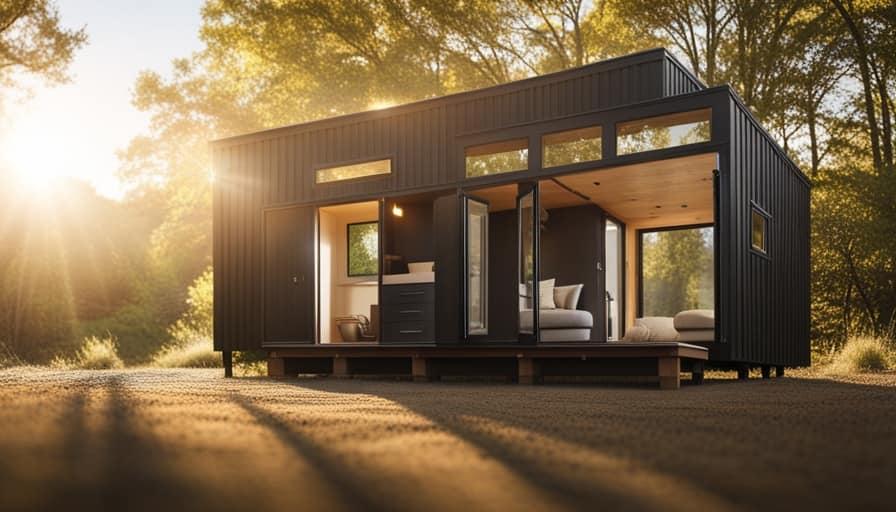
-
Incorporate alternative energy sources: Explore the use of alternative energy sources such as solar panels or wind turbines. By integrating these systems during the construction phase, you can avoid additional labor costs associated with retrofitting.
-
Optimize material usage: Carefully plan and optimize the use of materials to minimize waste. This can be achieved by accurately measuring and cutting materials, as well as repurposing leftover materials for other parts of the project.
-
Prioritize efficient design: Focus on designing a space that maximizes functionality and minimizes unnecessary labor-intensive features. This includes thoughtful space planning, utilizing multipurpose furniture, and incorporating efficient storage solutions.
Implementing these strategies won’t only help reduce labor costs but also contribute to a sustainable and budget-friendly tiny house construction process.
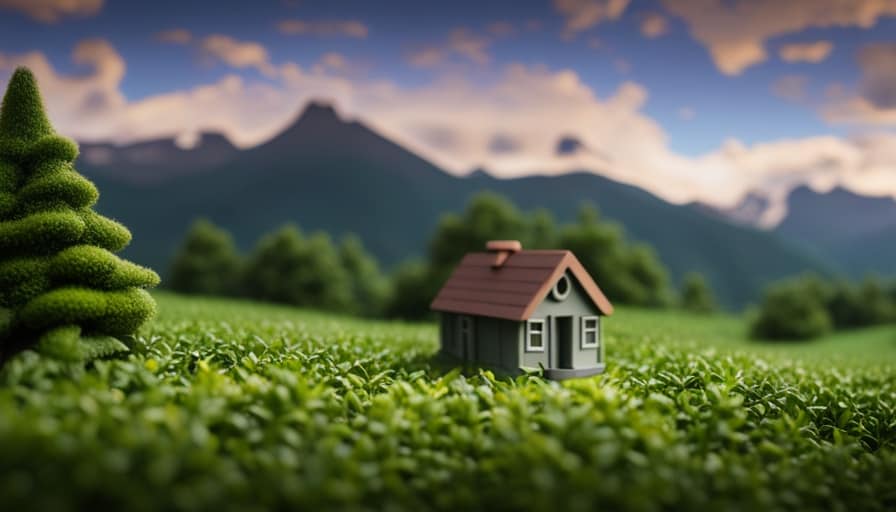
Tips for Finding Affordable Land for Your Tiny House
By researching online listings and networking with local real estate agents, I can easily find affordable land for my tiny house. It is important to explore alternative financing options for purchasing land for a tiny house to keep costs low. One option is owner financing, where the seller acts as the lender and allows you to make monthly payments instead of obtaining a traditional mortgage. Another option is crowdfunding, where you can raise funds from a community of supporters who believe in your tiny house project. Additionally, negotiating with local municipalities for reduced fees and regulations for tiny house living can save you money in the long run. Some municipalities may be open to creating special zoning or permitting regulations for tiny houses, making it easier and more affordable to live in them.
| Financing Options | Benefits |
|---|---|
| Owner Financing | Lower interest rates, flexible payment terms |
| Crowdfunding | Community support, no need for traditional loans |
| Negotiating with Local Municipalities | Reduced fees, simplified regulations |
Finding affordable land for your tiny house is a crucial step in building your dream home while staying within your budget. With the right research, networking, and negotiation skills, you can make your tiny house dreams a reality.
Frequently Asked Questions
What Are the Most Common Mistakes to Avoid When Building a Tiny House on a Tight Budget?
Common pitfalls to avoid when building a tiny house on a tight budget include overestimating DIY skills, not researching local codes and regulations, and not budgeting for unexpected expenses. Cost saving tips include using reclaimed materials and prioritizing essential features.
Are There Any Financing Options Available for Building a Tiny House?
Financing options for building a tiny house include personal loans, RV loans, and construction loans. Pros include flexibility, ownership, and the opportunity to live mortgage-free. Cons may include higher interest rates and stricter qualification requirements.
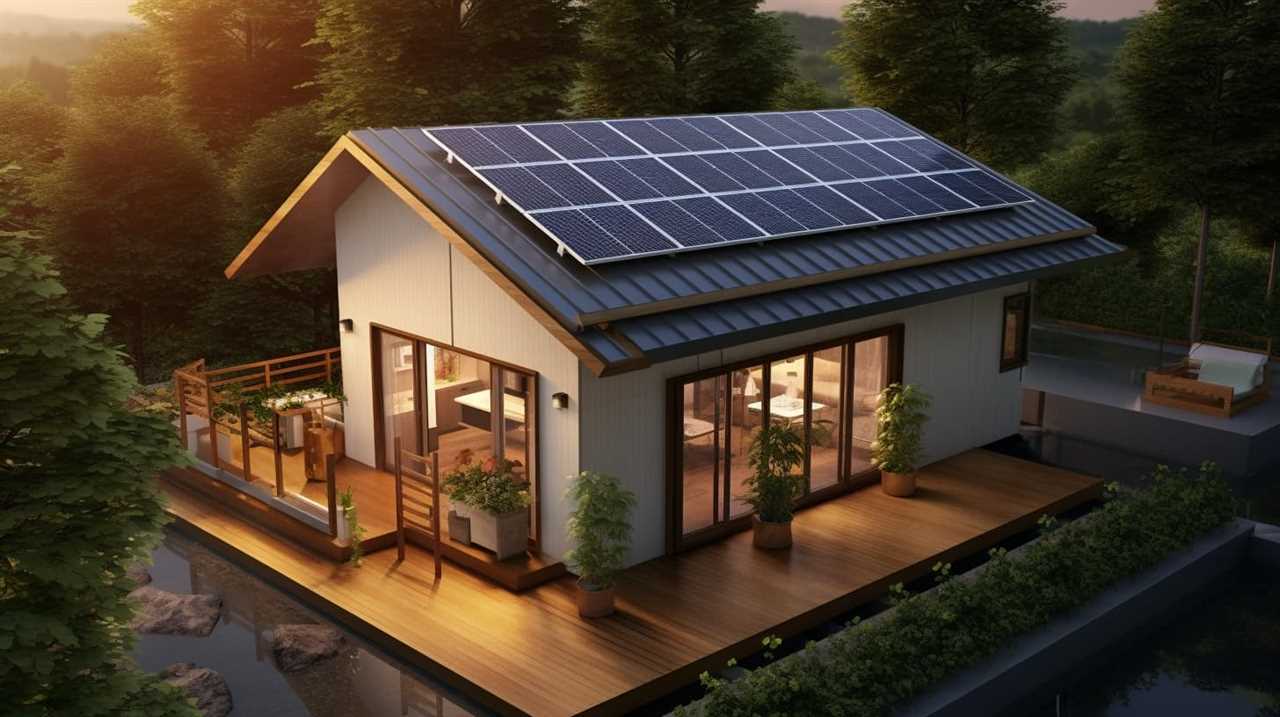
How Much Does It Cost to Maintain a Tiny House on a Yearly Basis?
Maintaining a tiny house on a yearly basis can be cost-effective. By embracing the benefits of living in a tiny house vs. a traditional home and following tips for minimizing maintenance costs, I can save money and enjoy a simpler lifestyle.
Can You Build a Tiny House Using Recycled or Salvaged Materials?
Using recycled and salvaged materials for a tiny house not only saves money, but also gives a sense of purpose and accomplishment. It’s a creative way to build sustainably and reduce waste while creating a unique and personalized home.
Are There Any Legal Restrictions or Regulations to Consider When Finding Land for a Tiny House?
When finding land for a tiny house, it’s important to consider legal restrictions and zoning regulations. Land requirements vary, and financing options may be limited. Maintenance costs can be lower, and eco-friendly building materials are often used.
Conclusion
In conclusion, building a tiny house can be an affordable and cost-effective option for those looking to downsize or live a more minimalist lifestyle. By considering factors such as materials, design strategies, and labor costs, it’s possible to build a tiny house on a tight budget.
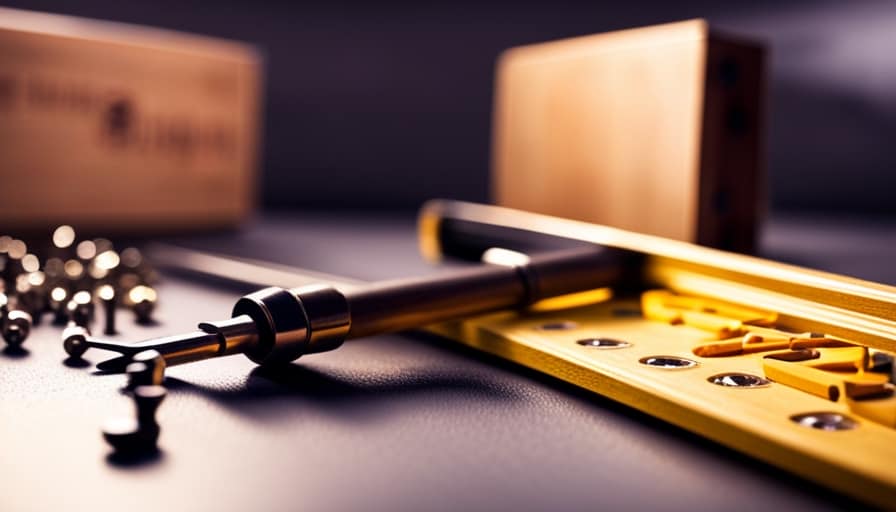
With a little creativity and resourcefulness, you can achieve your dream of owning a tiny house without breaking the bank. So why wait? Start planning and building your own tiny house today!
I’m Theodore, and I love tiny houses. In fact, I’m the author of Tiny House 43, a book about tiny houses that are also tree houses. I think they’re magical places where imaginations can run wild and adventures are just waiting to happen.
While tree houses are often associated with childhood, they can be the perfect adult retreat. They offer a cozy space to relax and unwind, surrounded by nature. And since they’re typically built on stilts or raised platforms, they offer stunning views that traditional homes simply can’t match.
If you’re looking for a unique and romantic getaway, a tree house tiny house might just be the perfect option.
-

 Beginners Guides2 weeks ago
Beginners Guides2 weeks agoHow To Buy A Tesla Tiny House
-

 Energy Efficiency2 months ago
Energy Efficiency2 months agoBest Tiny Homes For Cold Climates
-

 Beginners Guides2 weeks ago
Beginners Guides2 weeks agoTiny House Nation Where Are They Now Stephanie
-

 Tiny House Resources (e.g., legalities, cost, insurance, FAQs)2 months ago
Tiny House Resources (e.g., legalities, cost, insurance, FAQs)2 months agoDo Tiny Homes Need Planning Permission?
-

 Beginners Guides3 weeks ago
Beginners Guides3 weeks agoFrom The Show Tiny House Nation How Many Keep Their Tiny House?
-

 Beginners Guides2 months ago
Beginners Guides2 months agoUsing a Climbing Net For Treehouse Construction
-

 Beginners Guides2 months ago
Beginners Guides2 months agoHow to Build a Treehouse Without Drilling Into the Tree
-

 Beginners Guides3 weeks ago
Beginners Guides3 weeks agoTiny House Nation Who Pays For The Houses






